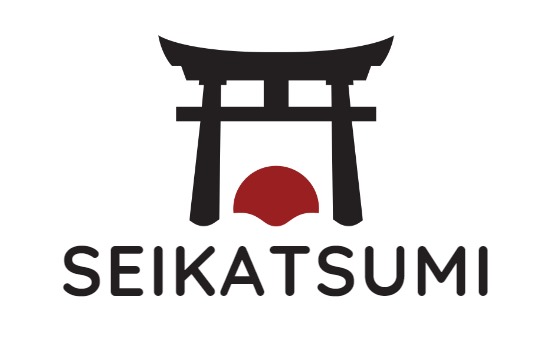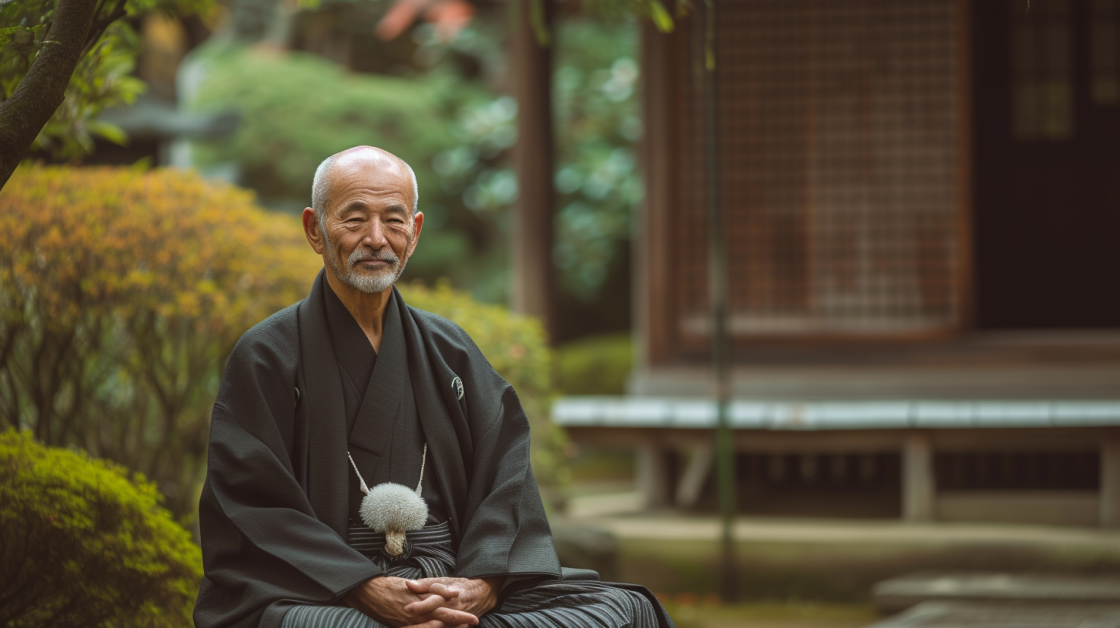Are you fascinated by the concept of Sabi Japanese? I share your intrigue!
I recognize the depth of understanding required to truly appreciate this nuanced aspect of Japanese culture. That’s why I’ve dedicated many hours to studying and embracing the philosophy of Sabi Japanese.
I’m excited to guide you through the captivating world of Japanese Sabi. This philosophy, emphasizing the beauty found in the natural aging process and the acceptance of life’s impermanence, is deeply ingrained in Japan’s cultural fabric.
So, why wait? Let’s delve into the serene and profound world of Japanese Sabi together.
Explore with me how this concept is reflected in art, lifestyle, and the Japanese perspective on beauty and existence! 🙂
Origins of Sabi Japanese
As I delve into the world of Japanese aesthetics, I can’t help but feel excited about the concept of Sabi.
Sabi is a Japanese term that refers to the beauty of impermanence, aging, and wear.
Historical Context
Sabi Japanese has its roots in the Japanese tea ceremony, which dates back to the 16th century. The tea ceremony was a way for the Japanese to appreciate the simple things in life, such as a bowl of tea or a flower arrangement.
Over time, the tea ceremony became a form of art, and the aesthetics associated with it evolved. Sabi Japanese emerged as a concept during this time and became an essential part of Japanese aesthetics.
Connection to Wabi-Sabi
Sabi is often associated with Wabi-Sabi, another Japanese aesthetic concept. While Sabi Japanese is the beauty of aging and wear, Wabi-Sabi is the beauty of imperfection and incompleteness.
The two concepts are often used interchangeably, but they have distinct differences.
Wabi-Sabi is more about the beauty of simplicity, whereas Sabi is about the beauty of aging.
Sabi in Japanese Aesthetics
As an important element of Japanese aesthetics, Sabi Japanese is a term that represents the beauty of natural patina and aging. It is a concept that celebrates the impermanence and transience of things.
Sabi is often associated with simplicity, understated elegance, and the passage of time.
Literature and Poetry
In Japanese literature and poetry, Sabi is a prominent theme that is often used to describe the beauty of the natural world.
The concept of Sabi is closely related to the idea of “mono no aware,” which is a term that represents the pathos of things.
It is a concept that emphasizes the beauty of things that are fleeting and impermanent.
Garden Design
In Japanese garden design, Sabi is an important element that is used to create a sense of tranquility and harmony. Sabi can be seen in the use of natural materials such as rocks, moss, and weathered wood.
It is also evident in the use of asymmetry and irregularity, which are used to create a sense of naturalness and simplicity.
Tea Ceremony
In the Japanese tea ceremony, Sabi Japanese is an essential element that is used to create a sense of tranquility and harmony. The tea ceremony is a ritual that celebrates the beauty of simplicity and understated elegance.
Sabi is evident in the use of simple, natural materials such as clay, wood, and bamboo. It is also seen in the use of irregular shapes and asymmetry, which are used to create a sense of naturalness and simplicity.
Hey you! Are you interested in more aesthetics? Then be sure to check out our top articles! You definitely can’t miss it!
Japanese Aesthetic 2024: The Beauty of Simplicity and Harmony
90s Japan Aesthetic: The Era’s Best Iconic Styles and Culture 2024
Sabi and Zen Philosophy
As someone who has always been fascinated by Japanese culture, I find the concept of Sabi to be particularly intriguing.
Sabi is one of the key concepts in Japanese aesthetics, and it refers to the beauty of imperfection, transience, and age. In this section, I will explore the relationship between Sabi Japanese and Zen philosophy.
Zen Buddhism Influence
Sabi is closely linked to Zen Buddhism, which emphasizes the importance of mindfulness and living in the present moment.
Zen philosophy teaches us to accept impermanence and to find beauty in the ordinary. Sabi embodies these principles by celebrating the beauty of things that are old, worn, and imperfect.
Mindfulness and Impermanence
The concept of Sabi Japanese is also closely tied to the idea of impermanence. In Zen philosophy, impermanence is one of the three marks of existence, along with suffering and non-self.
Impermanence refers to the fact that all things are constantly changing and that nothing lasts forever.
Sabi celebrates this impermanence by finding beauty in things that are old and worn, such as a weathered stone or a rusted piece of metal.
Contemporary Interpretations
As I explore the concept of sabi in modern times, I find that the idea of embracing imperfection has found its way into various aspects of contemporary Japanese art, design, and pop culture.
Here are a few examples:
Modern Art and Design
In recent years, many Japanese artists and designers have incorporated sabi into their work, creating pieces that celebrate the beauty of imperfection.
For instance, some ceramicists intentionally leave cracks and chips in their pottery to highlight the natural wear and tear that occurs over time.
Similarly, some furniture designers use reclaimed wood that bears the marks of its previous life, such as knots and scratches, to create pieces that have a unique character.
In graphic design, Sabi Japanese has been used to create minimalist designs that focus on negative space and simplicity.
The use of muted colors and rough textures can evoke a sense of tranquility and nostalgia, while also conveying a sense of authenticity and honesty.
Sabi in Pop Culture
Sabi has also become a popular theme in Japanese pop culture, particularly in music and film.
For example, many J-pop and indie bands incorporate the sound of vinyl crackling or tape hiss into their recordings, giving their music a vintage feel.
Some filmmakers also use techniques such as desaturation or grainy filters to create a sense of nostalgia or melancholy in their movies.
In addition, the concept of sabi has been explored in anime and manga, often in the form of characters who are flawed or damaged in some way.
These characters are often portrayed as sympathetic and relatable, and their imperfections are seen as part of what makes them unique and interesting.
Learning and Experiencing Sabi
As I delved deeper into Japanese culture, I became fascinated with the concept of Sabi. Sabi is a Japanese aesthetic that emphasizes the beauty of imperfection, the passage of time, and the natural world.
It is often associated with objects that are old, worn, and weathered, but it extends beyond that to encompass a way of life.
Cultural Immersion
To truly understand Sabi Japanese, I knew I had to immerse myself in Japanese culture. I traveled to Japan and visited traditional tea houses, where I witnessed the art of the tea ceremony.
The simplicity and elegance of the ceremony, with its focus on mindfulness and respect for nature, embodied the essence of Sabi.
I also explored Japanese gardens, which are designed to reflect the natural world in miniature.
These gardens often feature elements of Sabi, such as weathered stones, moss-covered paths, and aged wooden structures. Walking through these gardens, I felt a sense of peace and tranquility that I had never experienced before.
Artistic Expression
Sabi is not just a way of life, but also a form of artistic expression. I discovered this firsthand when I tried my hand at traditional Japanese pottery.
The process of creating pottery is slow and deliberate, with a focus on the imperfections that make each piece unique. The finished product is not meant to be perfect, but rather to embody the beauty of imperfection.
In addition to pottery, Sabi Japanese is also expressed through other forms of art, such as calligraphy and painting.
These art forms emphasize simplicity and minimalism, with a focus on the natural world and the passage of time. By studying these art forms, I gained a deeper appreciation for the beauty of imperfection and the transience of life.
My personal thoughts of sabi japanese!
The philosophy of Sabi Japanese deeply fascinates me. I find its perspective on embracing imperfection and the transient nature of life truly impressive.
This concept, which finds beauty in the flawed, the decayed, and the simple, offers a profound way of looking at the world. Particularly, the tranquility embodied in the Japanese tea ceremony perfectly encapsulates the Sabi aesthetic.
It’s not just about the ritual; it’s about finding calmness and beauty in the moment, appreciating things as they are, imperfect and impermanent. I am continually inspired by this Zen approach and actively try to incorporate it into my daily life.
It’s a practice of mindfulness, of finding peace in the ordinary and the aged, and of seeing the elegance in simplicity. This philosophy has not only influenced my appreciation of physical objects and environments but also my approach to life’s challenges and experiences.
Embracing Sabi Japanese is about more than aesthetic appreciation; it’s a path to a more centered, peaceful way of living.
Frequently Asked Questions
What does ‘sabi’ mean in Japanese culture?
“Sabi” refers to the beauty of aging and serene acceptance of the natural cycle of life.
Is sabi related to ‘wabi-sabi’?
Yes, ‘sabi’ is part of ‘wabi-sabi’, a concept appreciating imperfection and transience.
How is sabi expressed in Japanese art?
Through simplicity, subdued elegance, and appreciation of the flawed or weathered.
If you liked this blog article about sabi japanese, don’t forget to follow us on Pinterest so you don’t miss any more food tips.
Let us know, which of the above ist your favorite food creation!



Hello there, I found your web site via Google while looking for a related topic, your site came up, it looks great. I have bookmarked it in my google bookmarks.